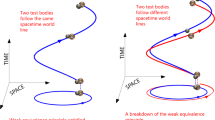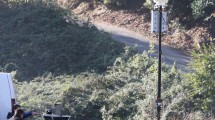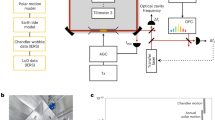Abstract
HART1 has referred to the potential uses of radar in geodesy and photogrammetry. The War Office has now granted permission to publish details of geodetic observations made in Italy by radar during May–June 1945. The general principle of these observations was that an aircraft, a medium bomber with an operational speed of 230 miles per hour, flew a circular arc centred upon a ground radar beacon while the distance from a second beacon was recorded at regular (1–2 sec.) intervals. The geodetic distance between the two beacons was then computed from the radius of the arc and the minimum recorded distance from the second beacon by correcting for altitude and refraction.
This is a preview of subscription content, access via your institution
Access options
Subscribe to this journal
Receive 51 print issues and online access
$199.00 per year
only $3.90 per issue
Buy this article
- Purchase on Springer Link
- Instant access to full article PDF
Prices may be subject to local taxes which are calculated during checkout
Similar content being viewed by others
References
Roy. Soc. Empire Sci. Conf., 1946.
Bell System Tech. J., 14, 369 (Appendix) (1935).
Author information
Authors and Affiliations
Rights and permissions
About this article
Cite this article
HALLIDAY, D. Geodetic Measurements by Radar. Nature 164, 1005–1006 (1949). https://doi.org/10.1038/1641005a0
Issue Date:
DOI: https://doi.org/10.1038/1641005a0
Comments
By submitting a comment you agree to abide by our Terms and Community Guidelines. If you find something abusive or that does not comply with our terms or guidelines please flag it as inappropriate.



